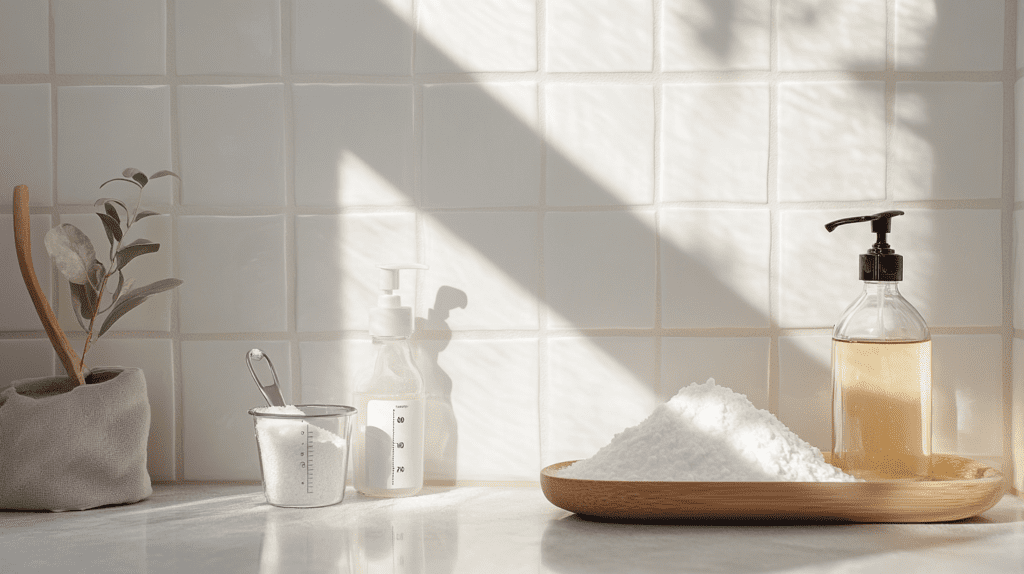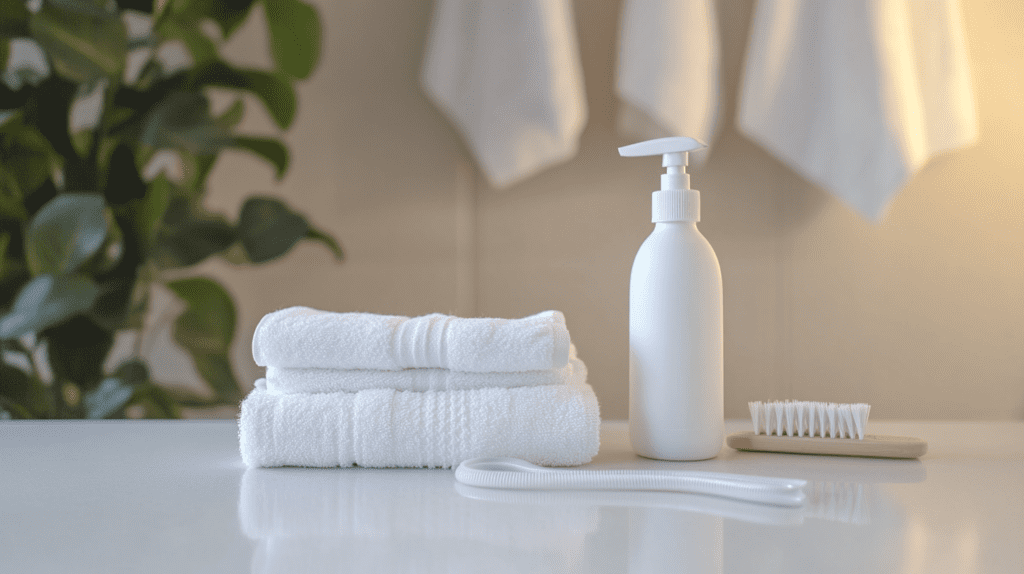The Day My Shower Became a Bathtub
Armed with a plunger and zero experience, I launched my first attack. Five sweaty minutes later, the crog was still winning. That’s when I turned to the internet for backup. Enter the magical (and slightly terrifying) drain snake. After one brave trip to the store and a nerve-wracking tug, I pulled out the grossest hair monster I’d ever seen.
Victory was mine, and my shower flowed freely again. From that day forward, I vowed never to underestimate the power of regular drain maintenance.
Now I’m sharing everything I learned—so you can defeat your own crog and enjoy a clog-free shower, too.
Why Shower Drains Clog (And Why They’re Not Self-Cleaning)
Your shower drain works hard, but it’s not magical—it’s not going to clean itself. Most people instinctively clean the visible floor of their shower and the area around the drain. However, they often forget to check what lurks beneath. Unfortunately, that’s where most blockages start.
The usual suspects of clogged drains include:
-
- Hair: The most common offender, tangled and matted with soap scum.
-
- Soap Residue: Over time, shampoo and soap solids harden, contributing to buildup.
-
- Skin Cells: Yep, tiny bits of you are part of the problem.
-
- Hard Water Minerals: Deposits from hard water make your pipes narrow over time.
-
- Random Debris: Everything from loofah pieces to razor blade covers can sneak down there, exacerbating a clog.
Recognizing what’s causing your drain to clog will help you not only clear it now but also prevent future disasters.
Step 1: Getting Started—Glove Up
Put on sturdy gloves. Trust me. You don’t want to touch what’s down there barehanded. Clear the shower area of any items, so you have room to work. Grab a flashlight to inspect what’s visible inside the drain. Whether it’s hair, soap, or the mysterious depth of gunk, it’s better to know what you’re dealing with before you start.
If your shower is slow to drain, wait until all the water has gone down. If there’s standing water, try to push it through with a plunger before moving forward. Once the area is clear, you’re ready to begin.
Step 2: Remove the Drain Cover
Most drain covers can be easily removed with a screwdriver—flat-head or Phillips, depending on the screws. Some twist off, while others have a pinched rod connecting the stopper to the drain. Remove the cover carefully and set it aside. This step opens the path to the next battle: the dreaded “what lies beneath.”
Step 3: Pull Out Hair and Visible Gunk
Shine your flashlight or phone light into the drain and remove any visible clumps of hair or debris. Use your hands, tweezers, or needle-nose pliers to pull out as much as possible. For hair stuck around the crossbars, a quick tug usually does the trick.
Toss all the debris into a trash bag immediately—you don’t want to spread the mess. This step alone often improves drainage significantly. Run water briefly to see if the clog is gone. If not, it’s time to dig deeper.
Step 4: Use Baking Soda and Vinegar (The Eco-Friendly Fix)
This natural remedy is a classic for a reason. It’s effective AND chemical-free. Here’s how to use it:
- Pour 1 cup of baking soda directly into the drain.
- Follow it with 2 cups of white vinegar. You’ll hear fizzing and bubbling as it breaks down grime and soap residue.
- Add another cup of vinegar to push the solution deeper into the pipes.
- Let the mixture sit for about 30 minutes to work its magic.
Flush the drain with hot water (or boiling water, if your pipes can handle it) to rinse away the loosened debris.
Step 5: Bring in the Big Guns – The Drain Snake
If baking soda and vinegar didn’t do the trick, it’s time to get hands-on with a plumber’s snake. This flexible tool is designed to reach deeper clogs in your pipes. If you don’t have one, you can DIY a snake using a wire hanger. Bend one end into a small hook and carefully lower it into the drain.
Here’s how to use it:
- Insert the snake into the drain until you feel resistance.
- Twist the tool to grab onto hair or debris.
- Slowly pull it out and marvel (or recoil) at what’s causing the clog.
- Repeat until the snake comes out clean.
If you don’t have a snake, some Reddit users suggest using a small, flexible brush like those designed for cleaning reusable straws. Be patient—this step can take a little effort but is highly effective.
Step 6: Use a Plunger for Stubborn Clogs
Place the plunger over the drain, ensuring a tight seal.
Add a bit of water to create suction and plunge vigorously several times. The suction can dislodge deeper blockages, sending them down the pipes. Test the drain after plunging to see if water flows more freely.
Step 7: Test the Waters
Run your shower to see how the water drains. If it flows freely, congratulations—you’ve conquered the crog! If it’s still slow, don’t worry. Some clogs are stubborn and require additional attention, which brings us to the next method.
When All Else Fails, Try a Biodegradable Drain Cleaner
If none of the above methods worked, it might be time to try a drain cleaner. Look for a biodegradable option like Green Gobbler or Drano Max Gel. These products are formulated to break down tough clogs without damaging your pipes. Be sure to follow the instructions carefully and avoid mixing cleaners with other substances, such as vinegar, as this can create hazardous fumes.
Preventing Future Clogs
Now that your shower drain is flowing freely again, let’s keep it that way.
Here are some easy and effective ways to prevent future clogs:
-
- Use a Drain Cover: These inexpensive tools catch hair and debris before they can clog your pipes. It’s a small investment that saves you from big headaches.
-
- Clean Regularly: Remove visible hair and gunk weekly to stop buildup in its tracks. A quick wipe of the drain cover after each shower goes a long way.
-
- Flush Monthly: A simple baking soda and vinegar treatment once a month keeps clogs at bay by breaking down any small accumulations before they turn into full-blown blockages.
-
- Be Mindful of What Goes Down the Drain: Avoid letting grease, oils, or solid debris into the drain. Even some bath bombs and oils can solidify and cause blockages.
By adopting these habits, you’ll keep your shower drain running smoothly and avoid those dreaded crog battles.
Final Thoughts
Unclogging a shower drain might not be glamorous, but it’s a task worth mastering. Whether you’re fishing out hair, mixing up a vinegar potion, or wielding a drain snake like a pro, these steps will save you time, money, and frustration. Prevention is key, so stay on top of regular maintenance and address slow drainage before it becomes a bigger issue.
Got your own DIY tips? Share them in the comments!
Now go reclaim your shower—and your sanity. 🚿



